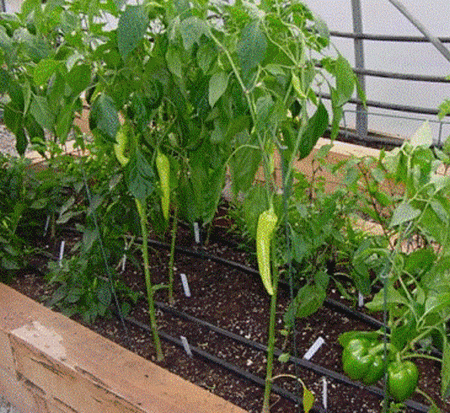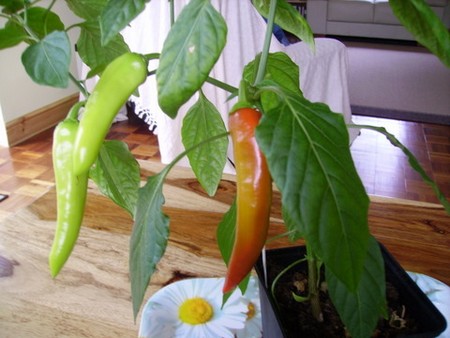Best Way to Prevent Problems When Growing Peppers and Chillies
Peppers in a greenhouse may be attacked by all the pests that affect tomatoes: aphids, whitefly and spider mites.
Aphids can infect the plants with a virus as well as weakening them by feeding on the sap. The sugary substance the aphids excrete will make the leaves sticky and will encourage a black, sooty mould. Check regularly for aphids, especially on the undersides of the leaves and, if necessary, spray with an insecticide based on pyrethrum or soft soap.
Whitefly can spoil the appearance of the plants and, if left to build up in large numbers, can weaken them too. Spray with pyrethrum and repeat at fortnightly intervals to catch flies that hatch from the impervious larvae or scales. Biological controls are available for both aphids and whitefly and are worth considering if either pest is a serious problem under glass. The secret with biological control is to maintain a constant temperature of about 20°C and to introduce the control before the pest has built up large numbers. Spider mites are hard to see with the naked eye. It is worth inspecting the undersides of the leaves regularly for the characteristic flecking and webbing. Maintaining a damp atmosphere by pouring water on the greenhouse floor will help to prevent spider mites building up to damaging levels. If they do appear, the most effective solution is the biological control agent phytoseiulus. Buy these as you spot the first spider mites, maintain a constant temperature as near to 20°C as possible, and the larger predatory mites will deal with the problem for you.
Outdoors, biological control is less likely to work because temperatures fluctuate too much. So instead use a non-persistent insecticide spray based on pyrethrum or soft soap solution.
Sweet peppers may suffer from blossom end rot – a discoloration at the end of the fruit. This condition can be prevented by regular watering throughout the hottest period.
Categories
Advertisements
Recent Articles
 How to Understand Bed Sizes – A Small Guide
How to Understand Bed Sizes – A Small Guide How to Select Some Must Have Kitchen Accessories
How to Select Some Must Have Kitchen Accessories Best Way to Change a Car Tire
Best Way to Change a Car Tire Best Way to Write an Affirmation
Best Way to Write an Affirmation Best Way to Take Charge of Your Financial Life
Best Way to Take Charge of Your Financial Life Best Way to Survive a Party When You Don’t Know Anyone
Best Way to Survive a Party When You Don’t Know Anyone Best Way to Stop Self Sabotaging Yourself
Best Way to Stop Self Sabotaging Yourself Best Way to Start Journal Writing
Best Way to Start Journal Writing Best Way to Speak with a Powerful Voice
Best Way to Speak with a Powerful Voice Best Way to Simplify Your Life
Best Way to Simplify Your Life Best Way to Respond to a Put-Down
Best Way to Respond to a Put-Down Best Way to Reduce Acne Breakouts
Best Way to Reduce Acne Breakouts Best Way to Recover from Dining Disasters
Best Way to Recover from Dining Disasters Best Way to Quit Your Job Gracefully
Best Way to Quit Your Job Gracefully Best Way to Make Your Own Website
Best Way to Make Your Own Website



Leave a Reply